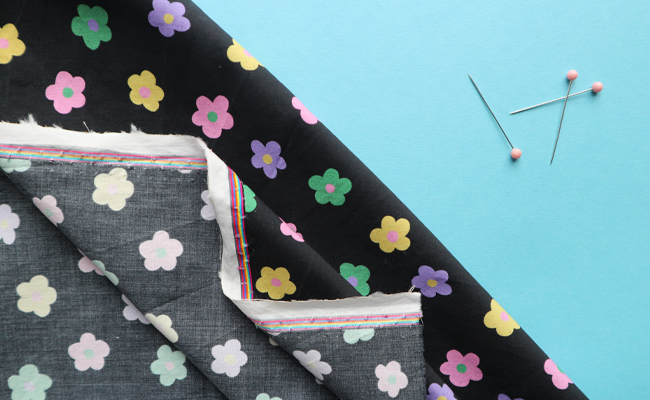
Do you ever wish your me-mades fit better across the bust? Do you find that excess fabric seems to pool around your bust, or that it's too tight? Ever think that the bust darts point in the wrong place on your garments? If you're finding yourself nodding enthusiastically in agreement to any of these statements, then you probably need to do a bust adjustment to your bodice pattern pieces.
It's Nikki here, Product Manager and fitting geek at Tilly and the Buttons, and I'm going to to talk you through how to do a full bust adjustment, a small bust adjustment and how to move the dart on a bust darted bodice.
Now, before we go any further I'd like to give you a little positive pattern pep talk. There are a few diagrams in this post, but whilst they might look quite daunting, they are relatively simple if you follow them step by step :)
How do I know if I need a bust adjustment?
There's a technical and a not-so-technical answer here! The answer depends on your own unique shape and the fit of the garment - you may not need to do a bust adjustment to a loose top or dress, but might have to do one on something more fitted. If you find that things are generally either too tight or too loose in the bust area, then I'd recommend making a quick toile of the bodice, or wearable toile of the whole garment to test the fit around the bust and take it from there. I'm going to briefly cover how you would work out how much to add or subtract from your bust in the adjustment, but do remember this is just a rough framework, and you might not need to do it at all.
Measure your high bust (your upper chest, just under your armpits). If you're making one of our patterns that comes in sizes UK 6-24, or which comes in sizes UK 6-34 and you're making size 6-16, add 5cm (2in). If you're making one of our patterns that is in sizes 16-34, or which comes in sizes 6-34 and you're making size 18-34, add 10cm (4in). Choose the pattern size with that bust measurement – this is the size you’ll do your bust adjustment on.
Now measure your full bust (fullest part, around the nipples) and compare it to the bust measurement on the pattern size you just selected.
If your full bust is 5cm (2in) smaller than the pattern, you’ll be subtracting 5cm (2in) from the pattern; if it’s 7.5cm (3in) bigger, you’ll be adding 7.5cm (3in) and so on. If you need to make the bust bigger, you'll need to do a full bust adjustment (FBA) and if you need to make it smaller, you'll need to do a small bust adjustment (SBA).
Since the front bodice pattern represents one half of the top, as the fabric is cut on the fold - or one boob - you'll be adding or subtracting half of that difference. So, if you want to do a 5cm (2in) full bust adjustment, you'll need to add 2.5cm (1in) to the pattern piece.
There are a few ways in which you can do a bust adjustment, but the method I'm going to show you today is the "slash and spread" method. It sounds a bit aggressive but this just means that you do the adjustment by cutting into your pattern piece and either spread it apart to create more space at the bust, or overlap it to make it smaller.
To do a bust adjustment you will need:
- a ruler (or pattern master if you have one)
- glue stick and/or sticky tape
- pencil
- paper scissors
- extra paper
As you'll be merrily snipping into your pattern piece with wild abandon for these adjustments, I thoroughly suggest tracing off the front bodice pattern piece so you can keep the original one intact in case you need to make any further adjustments. Make sure you trace all the notches, the dart and 'lengthen or shorten here' lines onto the new pattern piece.
Got your scissors and ruler at the ready? Ok, let's go. And remember, you've got this!
Full bust and small bust adjustments






